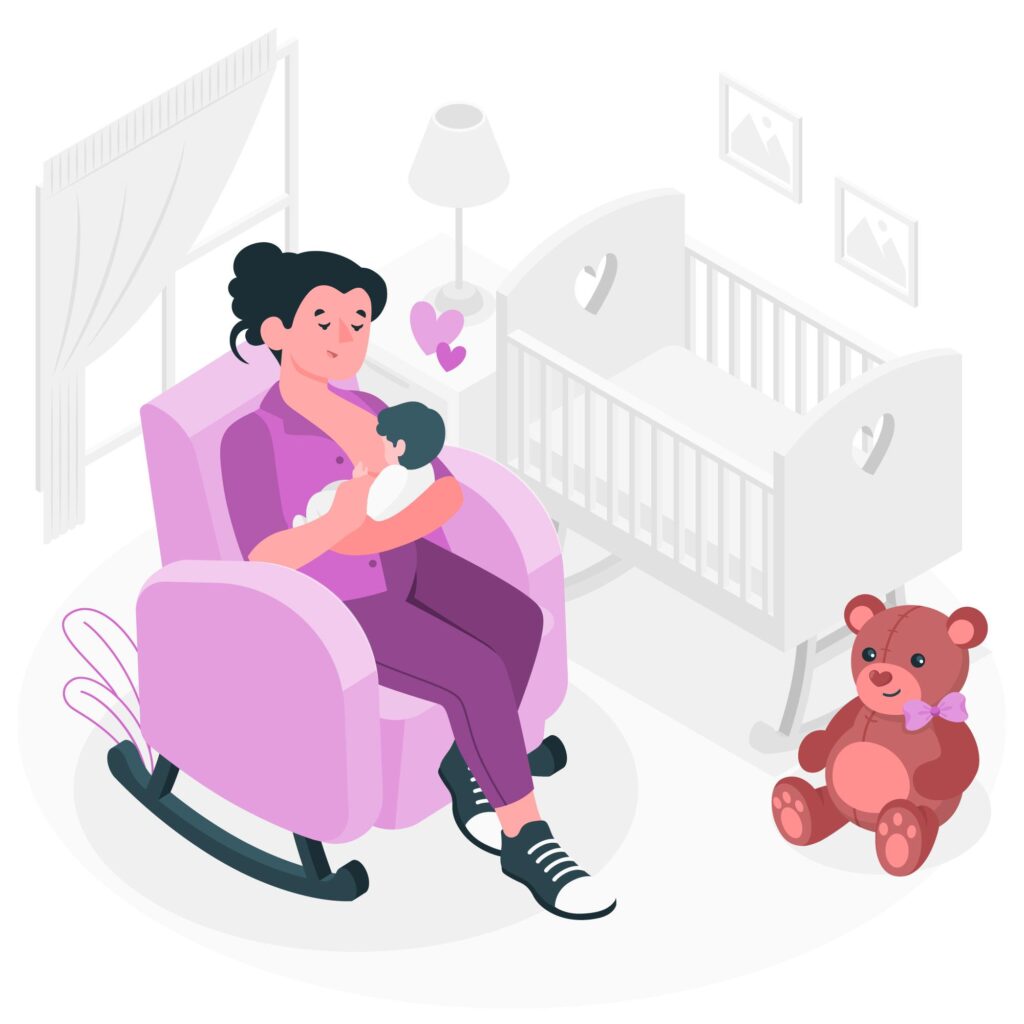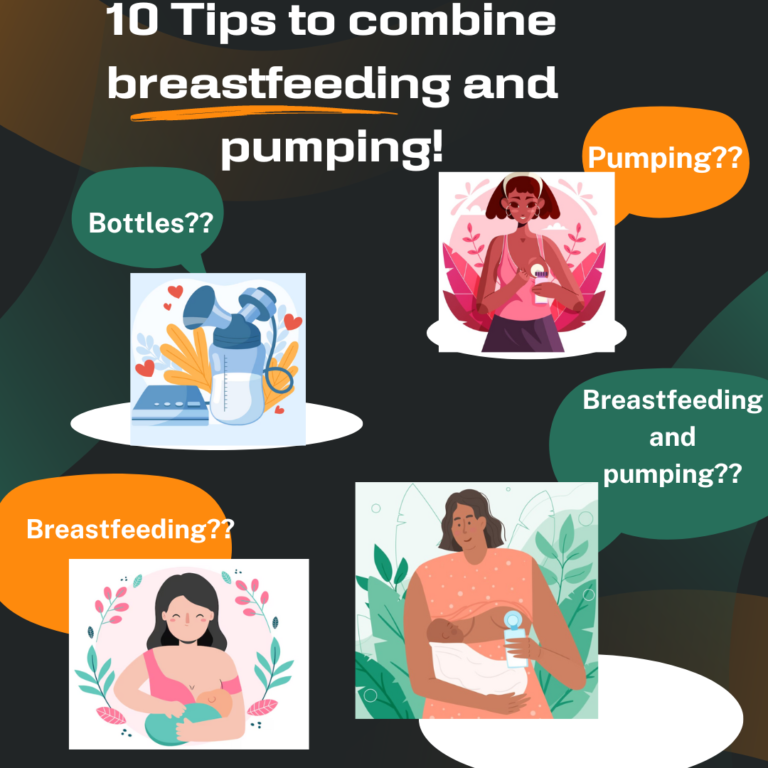10 Most common Breastfeeding Positions mistakes and how to avoid them!
Breastfeeding is a beautiful and essential aspect of motherhood. It provides numerous benefits to both the mother and the baby, fostering a strong bond and ensuring the newborn receives essential nutrients for healthy growth and development. However, achieving a successful breastfeeding journey requires proper positioning and latching techniques. Breastfeeding Positions Mistakes for Newborns will be discussed in this article.

In this article, we will explore the ten most common wrong breastfeeding positions for newborns and provide expert advice on how to correct them, ensuring a comfortable and fulfilling breastfeeding experience for both mom and baby.
10 Most Common Wrong Breastfeeding Positions for Newborns
Many mothers, especially first-time moms, unknowingly fall into the trap of using wrong breastfeeding positions when nursing their newborns. These incorrect positions can create challenges for both the mother and the baby, affecting the overall breastfeeding experience. Improper positioning may result in difficulties with latching, inadequate milk transfer, and even discomfort for both the baby and the mother.
It is essential for new mothers to be aware of these common mistakes and learn the correct breastfeeding positions to ensure a successful and enjoyable breastfeeding journey for themselves and their little ones. Seeking guidance from lactation consultants or healthcare professionals can be beneficial in understanding the right techniques and avoiding the pitfalls of wrong breastfeeding positions.
1. Side-Lying Nursing
While side-lying breastfeeding can be convenient for tired moms, it is not ideal for newborns. This position can lead to poor latch and hinder milk flow, causing frustration for both the baby and the mother.
2. Lying Down Breastfeeding
Similar to side-lying nursing, breastfeeding while lying down can compromise the baby’s latch and may also increase the risk of choking or ear infections.
3. Football Hold
This position involves holding the baby’s body along the side, with the baby’s legs and feet tucked under the mother’s arm. However, it can be uncomfortable for the baby and may lead to an improper latch.
4. Cradle Hold
Though a popular breastfeeding position, the cradle hold can strain the mother’s back and neck and may not always allow for a good latch.
5. Cross-Cradle Hold
While the cross-cradle hold offers better support for the baby’s head, it can still lead to latching issues due to incorrect positioning.
6. Feeding in a Reclined Position
Feeding in a reclined position may cause the baby to struggle with latching and lead to inadequate milk intake.
7. Overexposed Breast
Exposing too much of the breast during breastfeeding can lead to discomfort for the baby and may affect proper latching.
8. Underexposed Breast
On the other hand, not exposing enough of the breast can hinder the baby’s access to milk and make breastfeeding challenging.
9. Using a Nipple Shield Improperly
While nipple shields can be helpful in certain situations, using them incorrectly may cause latch problems and reduce milk transfer.
10. Incorrect Use of Breastfeeding Pillows
Breastfeeding pillows can aid in positioning, but if not used correctly, they may contribute to awkward angles and hinder proper latching.

How to Get a Better Latch with Your Newborn
Getting a proper latch is crucial for successful breastfeeding. Here are some tips to ensure a better latch:
- Hold Your Baby Close: Bring your baby’s chest and tummy close to yours, aligning their nose with your nipple.
- Wait for a Wide Mouth: Wait for your baby to open their mouth wide before attempting to latch.
- Aim the Nipple Up: Aim your nipple slightly upwards towards your baby’s nose, not directly into their mouth.
- Support the Neck: Cradle your baby’s head and neck with your hand, supporting them during feeding.
- Check for Proper Latch: A good latch involves the baby taking in not just the nipple but a significant portion of the areola as well.
How can I Avoid common Breastfeeding Positions Mistakes for Newborns
If you’re experiencing difficulties with breastfeeding, don’t worry; many mothers face challenges. Common breastfeeding mistakes include:
- Inconsistent Feeding Schedule: Try to feed your baby on demand, as newborns need to feed frequently.
- Ignoring Hunger Cues: Learn to recognize your baby’s hunger cues, such as rooting or sucking on their fingers.
- Using Pacifiers Too Early: Introducing pacifiers too soon may interfere with breastfeeding and cause latch problems.
Conclusion
In conclusion, mastering the correct breastfeeding positions for newborns is crucial for a successful breastfeeding journey. Avoiding the common wrong breastfeeding positions and learning how to get a better latch can make all the difference. Remember to hold your baby close, wait for a wide mouth, and ensure a proper latch to enhance the breastfeeding experience for both you and your baby.
References
- Tiruye, G., Mesfin, F., Geda, B. et al. Breastfeeding technique and associated factors among breastfeeding mothers in Harar city, Eastern Ethiopia. Int Breastfeed J 13, 5 (2018). https://doi.org/10.1186/s13006-018-0147-z
- Goyal RC, Banginwar AS, Ziyo F, Toweir AA. Breastfeeding practices: Positioning, attachment (latch-on) and effective suckling – A hospital-based study in Libya. J Family Community Med. 2011 May;18(2):74-9. doi: 10.4103/2230-8229.83372. PMID: 21897915; PMCID: PMC3159232.
- Nancy S, Sindhuri R, Arunagirinathan A, Dongre AR. Breastfeeding Positioning and Attachment among Postnatal Mothers: A Mixed Methods Study in a Tertiary Care Hospital in Puducherry, South India. Indian J Community Med. 2022 Jan-Mar;47(1):120-124. doi: 10.4103/ijcm.ijcm_859_21. Epub 2022 Mar 16. PMID: 35368469; PMCID: PMC8971882.
- Nalini, Aswathaman & Sajjid, Mohamed & Kamalarathnam, C. & Seeralar, A.. (2018). Assessment of breastfeeding position and attachment (ABPA) in a tertiary care centre in Chennai, India: an observational descriptive cross-sectional study. International Journal of Contemporary Pediatrics. 5. 2209. 10.18203/2349-3291.ijcp20184282.
Frequently Asked Questions:
- Is side-lying breastfeeding safe for newborns?
Side-lying breastfeeding may not be the safest option for newborns, as it can lead to latch problems and hinder proper milk flow. It is best to opt for other breastfeeding positions.
- How should a baby be positioned for breastfeeding?
For successful breastfeeding, hold your baby close, ensure a wide mouth for latching, and support their neck and head during feeding.
- What is the easiest breastfeeding position for a newborn?
The cradle hold is often considered one of the easiest breastfeeding positions for newborns, as it provides good support and allows for a proper latch.
Kindly Note: Remember, each baby is unique, and finding the best breastfeeding position may require some trial and error. Don’t hesitate to seek support from a lactation consultant if you encounter challenges, as they can provide personalized guidance for your breastfeeding journey. Happy breastfeeding!













+ There are no comments
Add yours